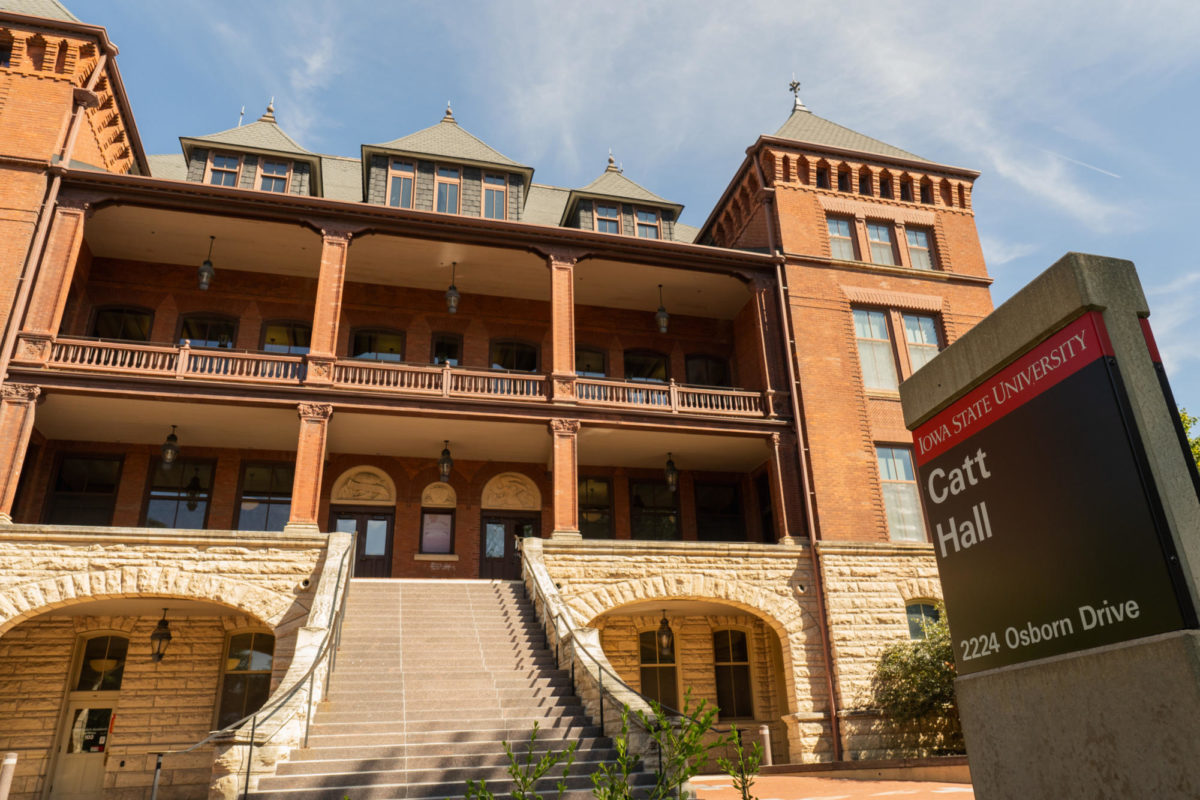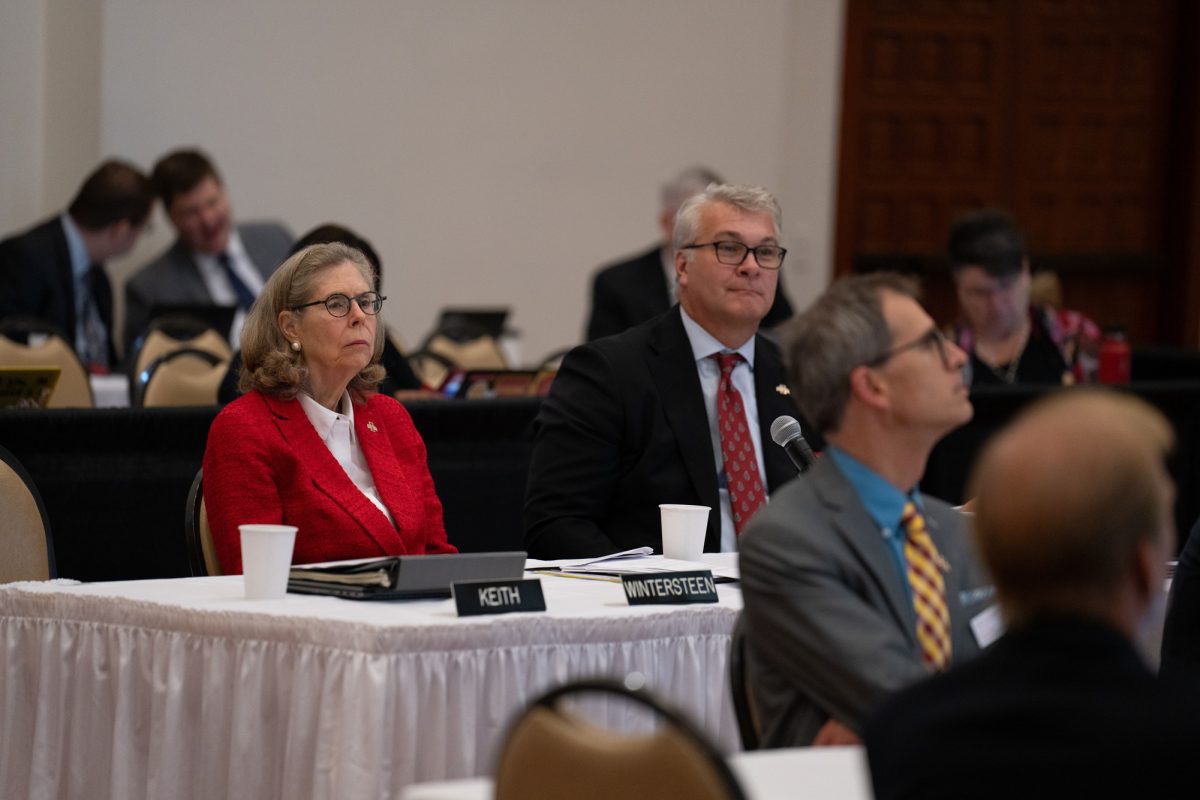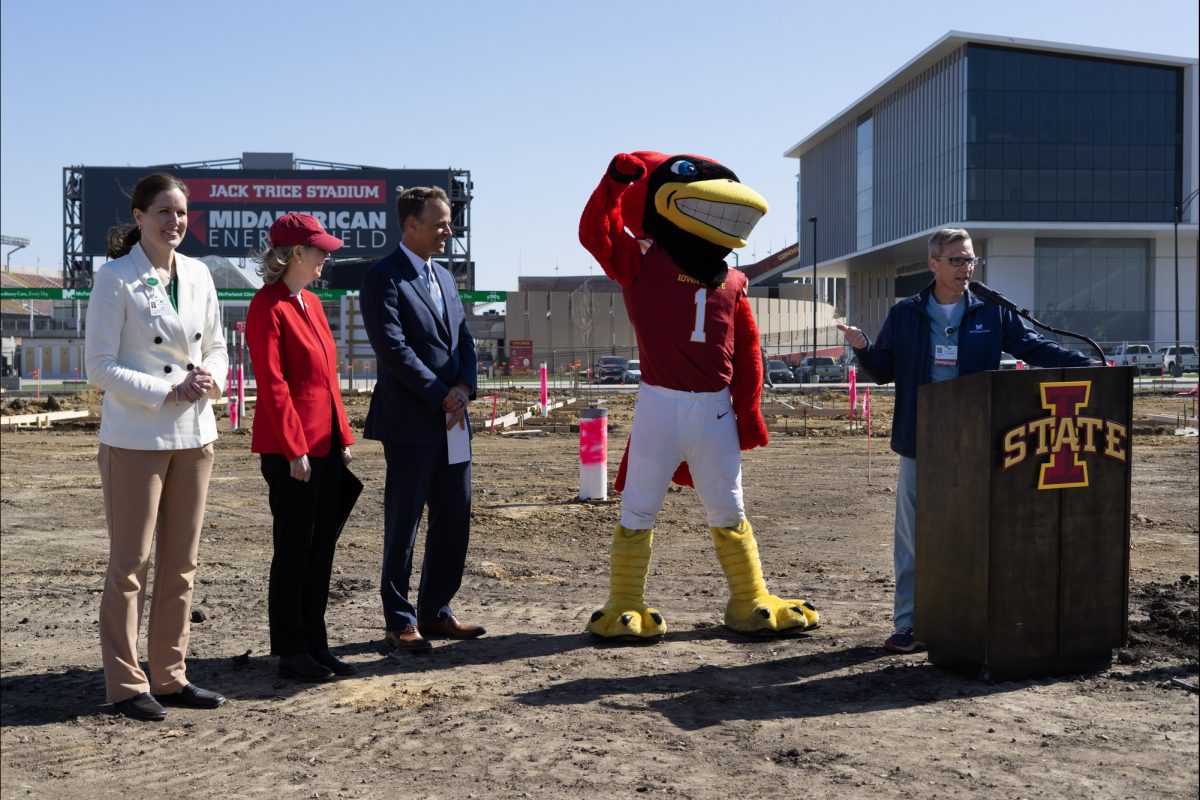Thirty-two months later, the committee reviewing history, context and public comments about Carrie Chapman Catt concluded the Central Campus building bearing the suffragist’s name will keep its name.
The committee received 311 public comments regarding the name change and announced the committee’s final decision Thursday.
University naming policies, established shortly before the Catt committee was formed, require a two-thirds majority to recommend a name change.
The vote, 11-4 in favor of keeping the name, was cast in Wednesday’s meeting, where the committee reviewed its final report, which includes the 311 public comments.
“The number of individuals who responded underscores the importance of this issue to the university community, our alumni and stakeholders and the public,” Carol Faber, chair of the committee and associate professor of graphic design, told Inside Iowa State.
President Wendy Wintersteen thanked members of the Iowa State community for the input provided during the process, which lasted over two years and concluded with a 60-day public comment period that started in August.
“I extend my thanks to the committee for their service to the university and to Carol Faber for chairing the committee. Also, my thanks goes to all who provided input, support and feedback to the committee’s work,” Wintersteen stated in a university-wide email.
Wintersteen announced she accepted the recommendation and informed the Iowa Board of Regents of the acceptance, which ended the process.
“The committee members had to come to grips with history that is told and understood from differing perspectives across a century. Theirs was an extraordinary commitment of time and effort,” Wintersteen stated.
The initial vote by the committee in August was 9-6 in favor of keeping the name.
Under the university renaming policy, established in 2020, Catt Hall is the only building to receive requests to be renamed, Brian Meyer, associate director for strategic communications, told the Daily in an October interview. Catt Hall received 21 requests for name review, which initiated the formation of the committee.
The committee reviewed Catt’s life, the movements surrounding her legacy, public comments and more in over 25 meetings.
The committee consulted with a Maryland-based research firm and interviewed 12 people with knowledge and expertise on the history of the building and deliberations on the matter.
“Extensive efforts were undertaken to seek out and consider every piece of pertinent information, including entries from Catt’s travel diaries,” Wintersteen stated.
The committee interviewed people who studied in the Catt Center for Women and Politics, professors, alumni, members of the September 29th Movement, a movement against naming the building for Catt, and more.
The building now serves as a headquarters for the College of Liberal Arts and Sciences and houses the Carrie Chapman Catt Center for Women and Politics.
Building backstory
Catt Hall was built in 1892 but did not receive Catt’s name until nearly 100 years later in 1990 when the Board of Regents approved the name. Since then, the reputation of its namesake has been called into question, resulting in several initiatives to remove Catt’s name from the building, but none so far successful.
Catt was the only woman in the Iowa State class of 1880 when she earned a degree in general science. Catt is more commonly known for her involvement in the advocation for the 19th Amendment, which approved women’s suffrage.
The movements made against Catt’s legacy have called into question her character, calling her racist.
As previously reported by the Daily, there was a movement shortly before the hall was named for Catt in the 1990s, with the Iowa State Black Student Alliance newsletter featuring an essay called “The Catt’s Out of the Bag: Was She Racist?”
The naming of the hall led to a letter-writing campaign, teach-ins on diversity, a hunger strike by a graduate student and calls for increased cultural studies.
A petition surfaced in 2020, calling for the renaming of the building. Shortly after, a policy was created for a formal process of removing names from campus buildings and properties.














